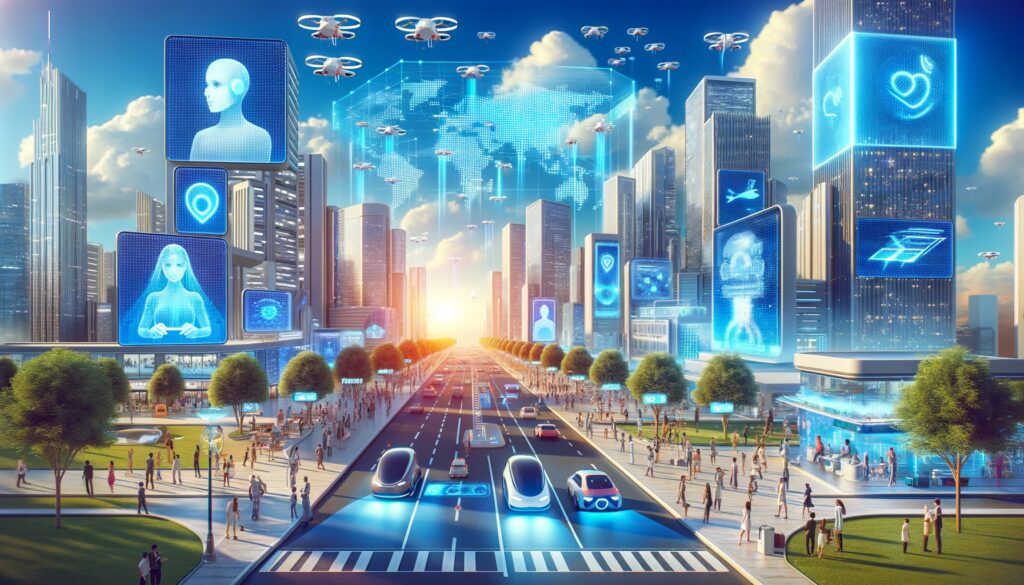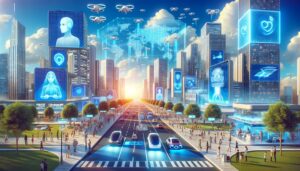Introduction to the Age of AI and Its Implications for Education
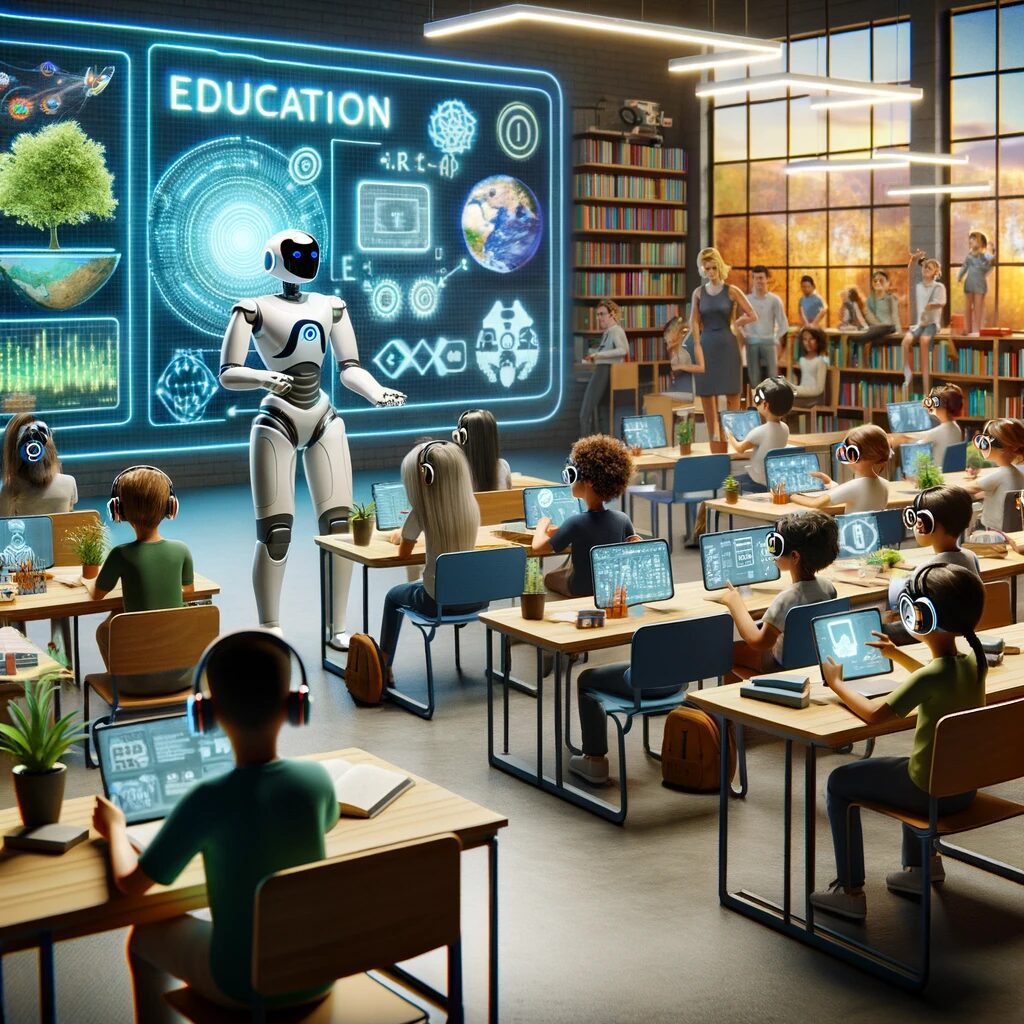
In an era where artificial intelligence (AI) marks a significant shift in our world, understanding its impact on education for the next generation is crucial. As a parent and uncle deeply involved in biomedical research and cybersecurity, I’ve seen technology’s transformative potential up close. How do we equip our children with the knowledge and skills to thrive in an AI-influenced world?
This article delves into AI’s role in reshaping education, promising a future where learning is more personalized, accessible, and aligned with our digital reality. It’s a topic that blends professional insights with a personal mission to understand our children’s educational needs in the AI age.
Understanding AI’s Growing Impact
Artificial Intelligence, once a concept confined to science fiction, has become a tangible force driving innovation and efficiency across multiple sectors, including education. Its growing impact is evident in the development of intelligent tutoring systems, adaptive learning platforms, and data-driven insights into student learning patterns. These technologies are tools and catalysts for creating more inclusive, engaging, and effective learning environments.

AI’s role in automating administrative tasks allows educators to focus more on teaching and less on logistics, thereby enhancing the quality of education. Furthermore, AI-powered analytics offer deep insights into individual learning styles, enabling personalized education plans that cater to each student’s unique needs. This level of personalization was unimaginable in the traditional education system, showcasing AI’s potential to revolutionize how educational content is delivered and consumed.
The Shift in Learning Paradigms
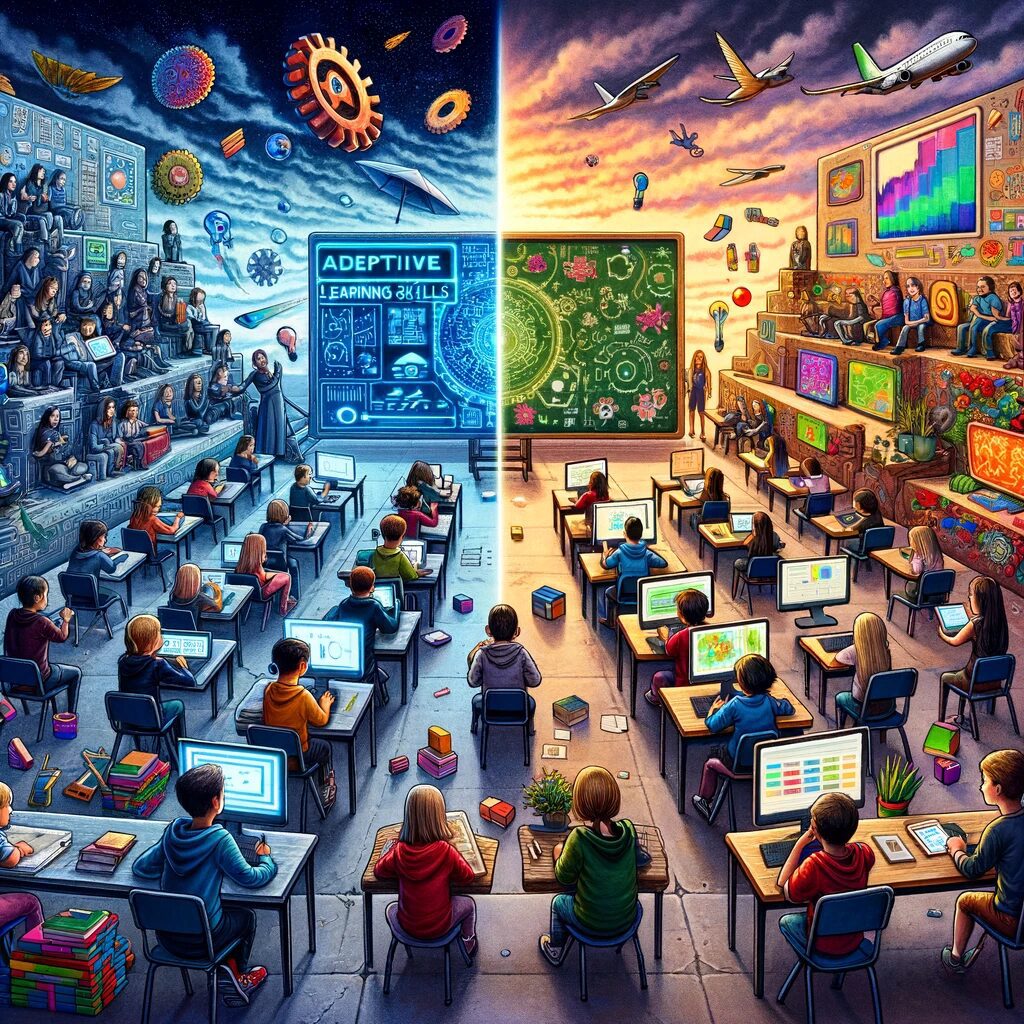
The integration of AI into education signifies a paradigm shift in learning methodologies. Traditional education models, characterized by one-size-fits-all teaching approaches, are being challenged by AI’s ability to provide customized learning experiences. This shift emphasizes the development of critical thinking, problem-solving, and adaptive learning skills over rote memorization and standardized testing.
Moreover, the age of AI encourages a move towards a more learner-centered approach, where students are not passive recipients of information but active participants in their learning journeys. This approach fosters a culture of curiosity, innovation, and lifelong learning, which are essential in an ever-evolving technological landscape.
Essential AI Competencies for the Next Generation
As we delve deeper into the Age of AI, it becomes increasingly clear that the competencies required for future success are evolving. The next generation must not only be proficient in using AI technologies but also possess a set of skills that enable them to thrive in an AI-integrated world. These competencies go beyond technical know-how, encompassing critical thinking, problem-solving, creativity, and innovation.
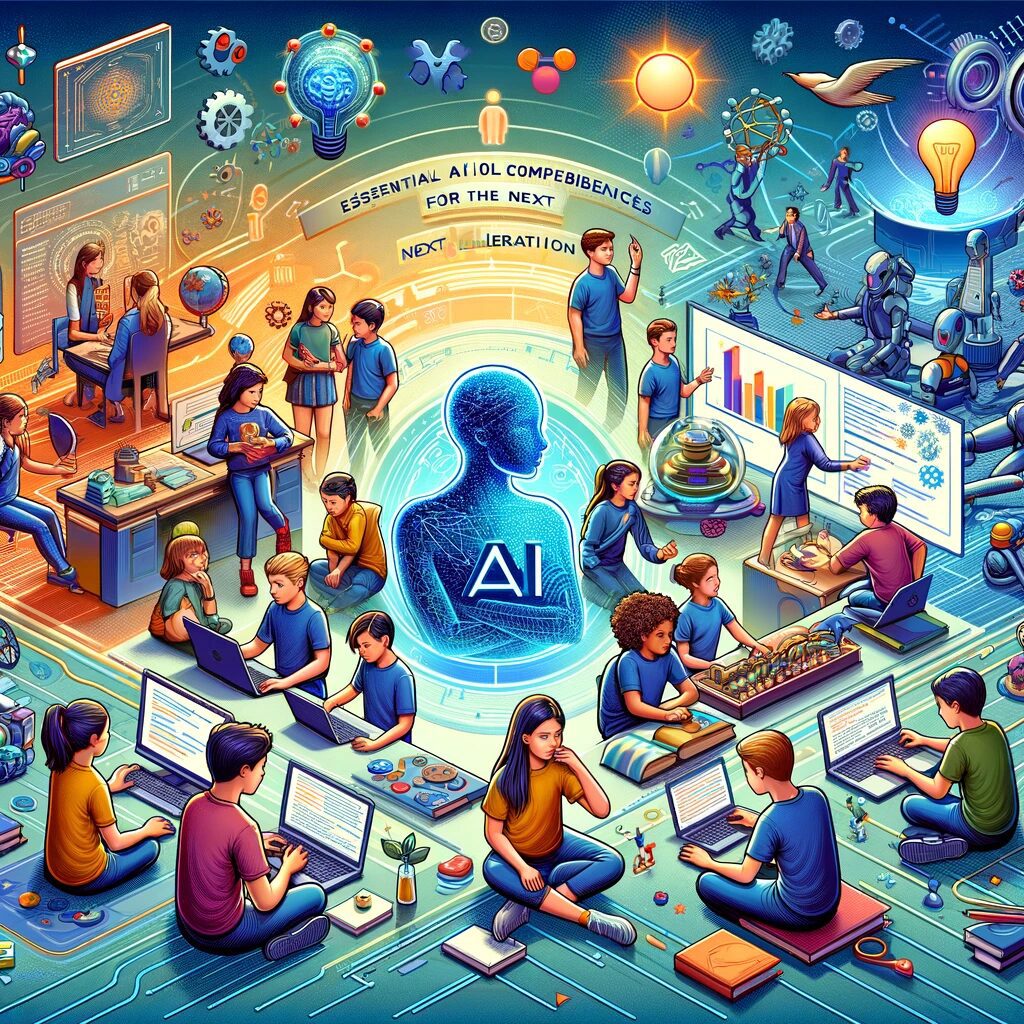
Critical Thinking and Problem-Solving in an AI World
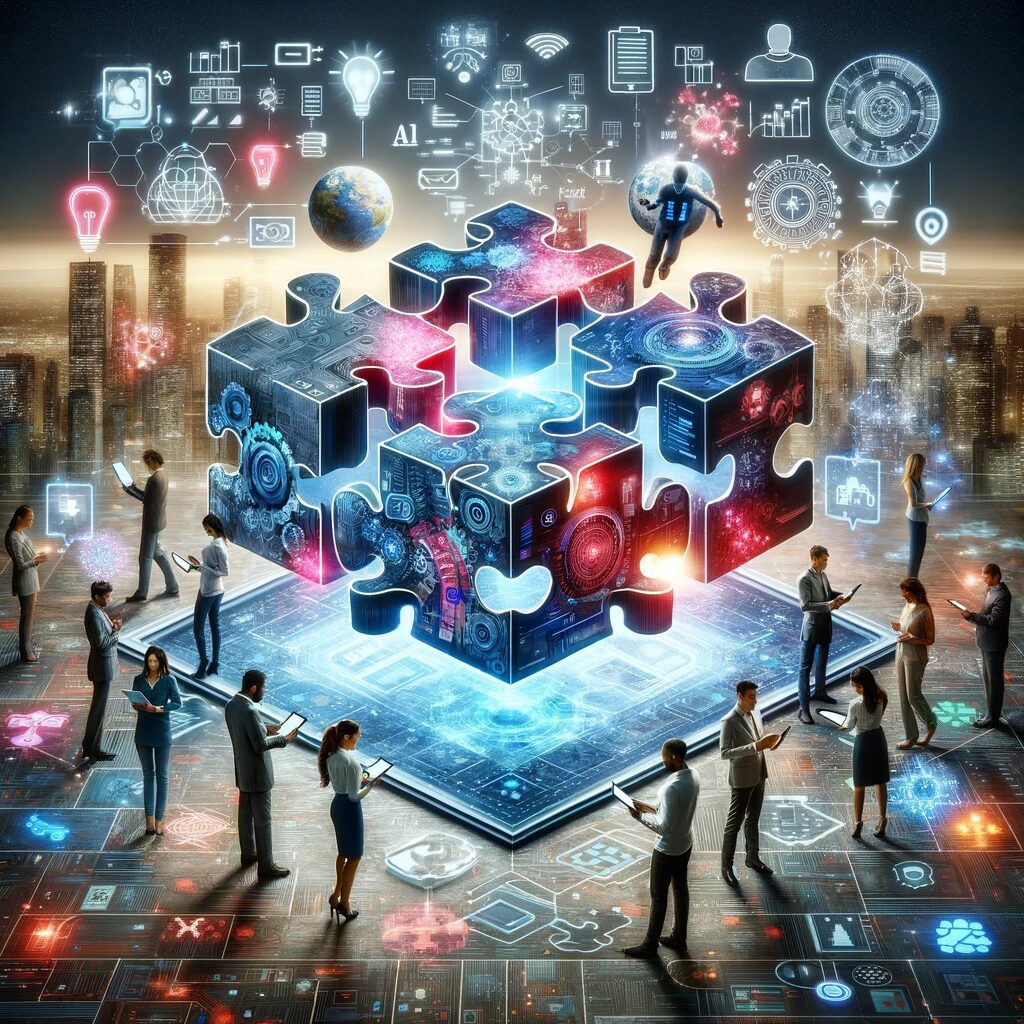
In an AI-driven society, critical thinking and problem-solving become paramount skills. AI can process information and provide solutions at unprecedented speeds, but the human ability to contextualize, question, and make ethical decisions remains irreplaceable. Educating our children to think critically involves teaching them to analyze and evaluate the information that AI systems present critically. It means encouraging them to ask probing questions, assess the reliability of AI-generated data, and consider the broader implications of AI-driven decisions.
Creativity and Innovation alongside AI
While AI excels at optimizing and automating tasks, creativity and innovation remain human traits. Integrating AI into education offers a unique opportunity to push the boundaries of traditional creative processes. Students can collaborate with AI, leveraging its capabilities to explore new art forms, design, and creative problem-solving. This symbiotic relationship between human creativity and AI opens up new avenues for innovation, where technology acts as a catalyst rather than a constraint.
By prioritizing critical thinking, problem-solving, creativity, and innovation in our educational systems, we can ensure that the next generation is prepared to meet the challenges of an AI-driven world and equipped to harness its potential for positive change.
Integrating AI into Current Educational Frameworks
The journey towards fully integrating AI into educational frameworks requires a multifaceted approach, focusing on curriculum adjustments, the introduction of new learning models, and significant emphasis on teacher training. As we transition into this new era, aligning educational practices with the capabilities and demands of AI technology becomes crucial for cultivating an environment that nurtures future-ready learners.
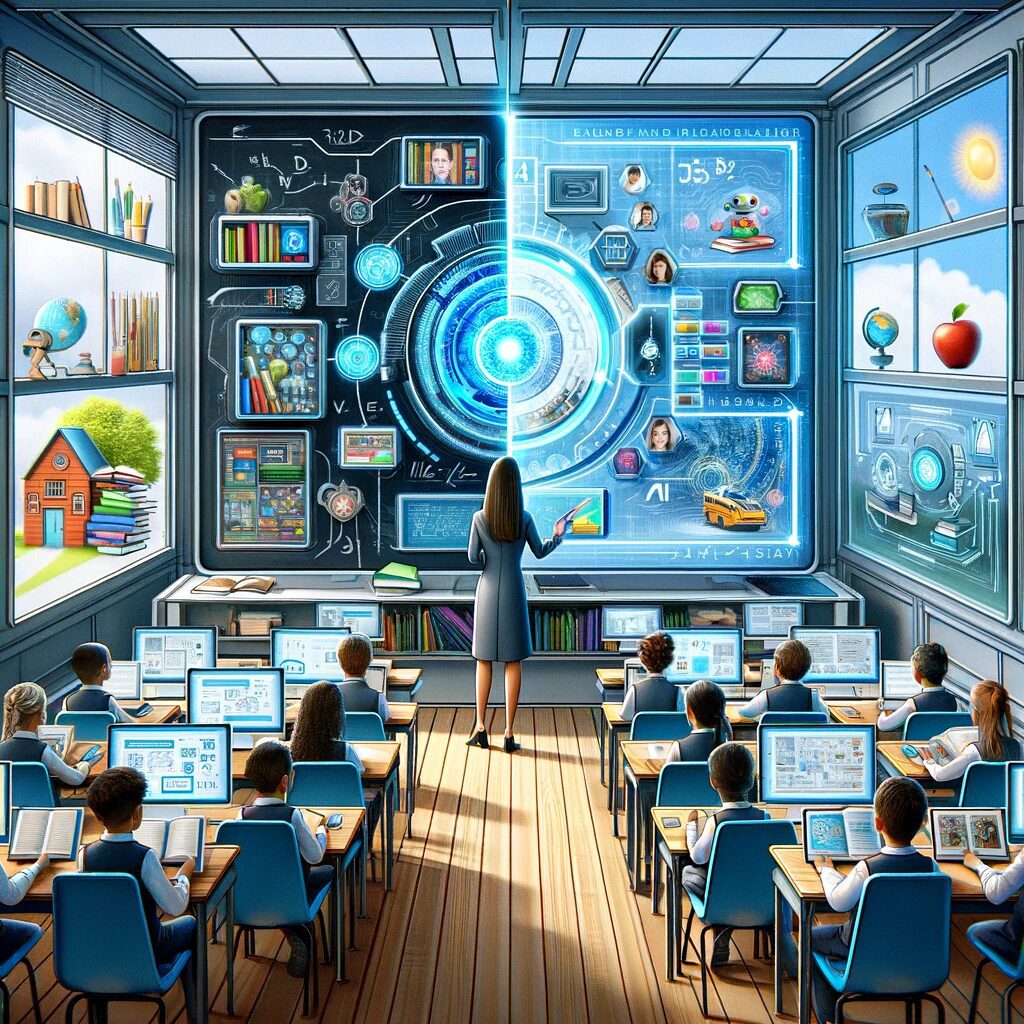
Curriculum Adjustments and New Learning Models
Adjusting the curriculum to incorporate AI involves more than just teaching students how to use new technologies. It means embedding the principles of AI, data literacy, and computational thinking across various subjects. This holistic approach ensures that students understand AI technology and grasp its application and impact on society. Moreover, introducing AI into the curriculum can stimulate interest in STEM, encouraging a new generation of innovators and problem solvers.
The Importance of Teacher Training in AI Education
The successful integration of AI into education hinges on the preparedness and adaptability of educators. Training teachers in AI education is vital for several reasons. First, it equips educators with the knowledge and skills necessary to effectively use AI tools and resources in their teaching practices. Understanding the capabilities and limitations of AI allows teachers to integrate technology in meaningful ways that enhance learning outcomes.
Real-World Applications and Project-Based Learning
In an education system increasingly influenced by artificial intelligence, bridging the gap between theoretical knowledge and practical application becomes crucial. Real-world applications of AI and project-based learning (PBL) methodologies offer students not only a glimpse into the potential of AI in their daily lives and a hands-on approach to mastering these technologies. This integration helps demystify AI, making it more accessible and understandable for students and preparing them for the challenges and opportunities of the future.
Examples of AI in Everyday Life
AI’s omnipresence in everyday life provides a rich source of inspiration for educational content. From personalized recommendations on streaming services to voice-activated assistants and autonomous vehicles, AI technologies are reshaping our daily experiences. Highlighting these examples in the classroom can spark students’ curiosity and demonstrate the practical value of AI knowledge.
Encouraging Hands-On AI Projects for Students
Project-based learning is an effective strategy for consolidating AI knowledge through practical application. Encouraging students to undertake hands-on AI projects fosters a deeper understanding of the technology and its capabilities. These projects can range from creating simple machine learning models to solve specific problems to developing chatbots or even designing AI-powered games.
Conclusion: Preparing for a Future with AI
As we wrap up our journey through “Navigating the New Education Landscape: The Role of AI in Our Children’s Future,” it’s clear that integrating AI into education marks a profound transformation in our approach to teaching and learning. Drawing from personal experiences—as a parent deeply invested in the future of children and as a professional straddling the worlds of biomedical research and cybersecurity—I’ve seen the potential of AI to redefine our educational paradigms. This exploration has reinforced the belief that preparing for an AI-driven future involves a holistic strategy encompassing curriculum reform, teacher empowerment, practical AI applications, and a solid ethical foundation.
The promise of AI in education lies in its potential to tailor learning experiences to the individual, making education more engaging, efficient, and in tune with each student’s needs and potential. Leveraging AI, we envision learning environments that nurture curiosity and creativity and instill a lifelong love for learning. Achieving this vision, however, requires a collective endeavor involving educators, policymakers, tech experts, and the broader community. Together, we must chart a course that aligns AI’s advancements with our educational objectives, ensuring it acts as a catalyst for growth and equality.
Moreover, as we guide our children into an AI-saturated future, we must equip them with the technical prowess to navigate this new terrain and the ethical compass to use technology wisely. A comprehensive education in AI’s societal, privacy, and moral implications is crucial for shaping skilled technology users and responsible digital citizens.
Our greatest asset in this rapidly evolving tech landscape is our capacity to adapt and innovate. Embracing AI as a cornerstone of education can unlock our students’ full potential, preparing them to face the future’s challenges with confidence and creativity. The journey ahead is filled with endless possibilities. As we move forward, our collective resolve to forge an educational system that is inclusive, visionary, and well-equipped to prepare our children for the incredible world that awaits them has never been more crucial.
Disclaimer: This article was created through a collaborative effort involving a staff writer and AI assistance. While every effort has been made to ensure the accuracy and quality of the information presented, some elements were generated using AI technology. For any concerns or queries, don’t hesitate to contact us directly.

